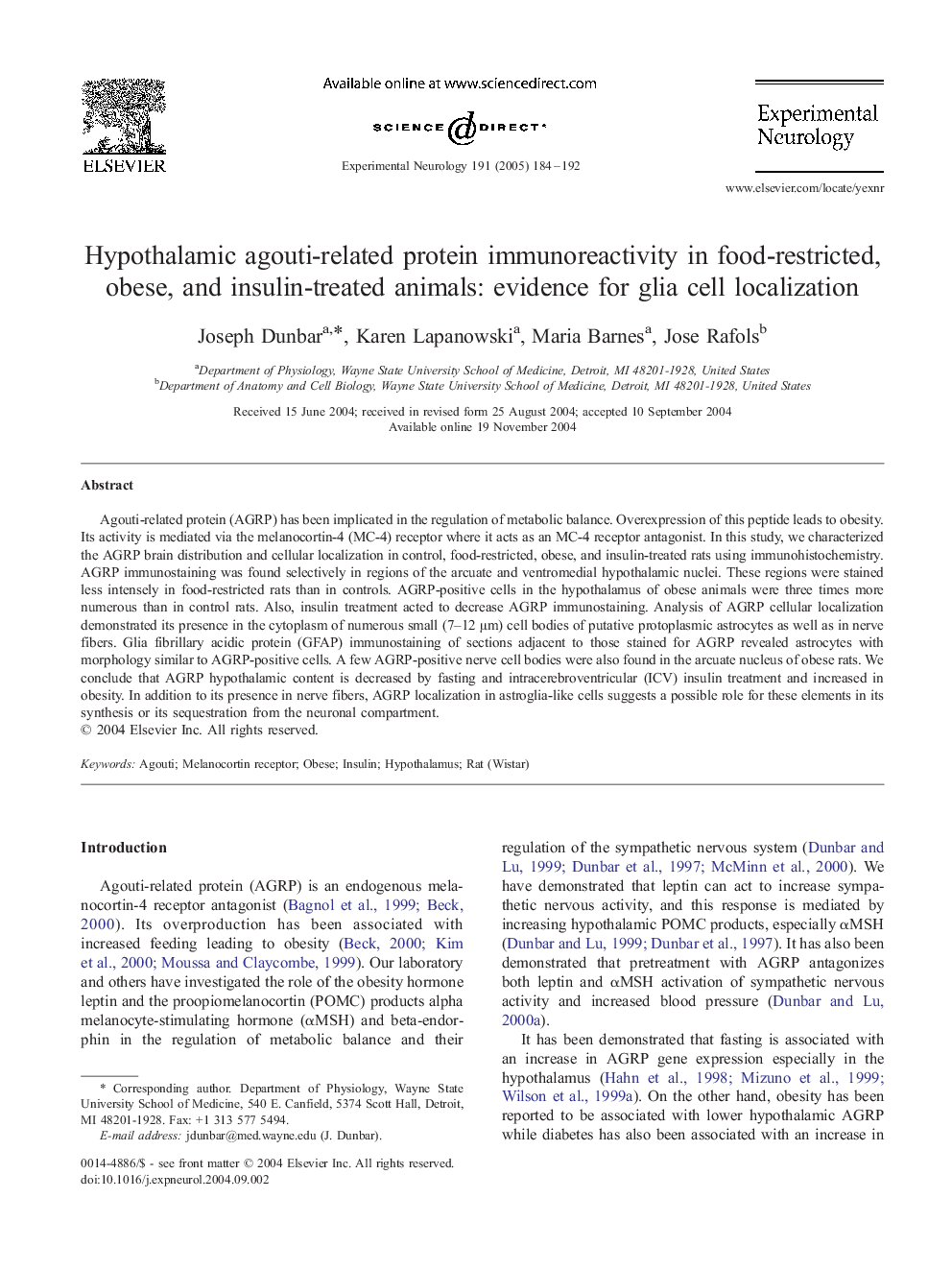| Article ID | Journal | Published Year | Pages | File Type |
|---|---|---|---|---|
| 9192146 | Experimental Neurology | 2005 | 9 Pages |
Abstract
Agouti-related protein (AGRP) has been implicated in the regulation of metabolic balance. Overexpression of this peptide leads to obesity. Its activity is mediated via the melanocortin-4 (MC-4) receptor where it acts as an MC-4 receptor antagonist. In this study, we characterized the AGRP brain distribution and cellular localization in control, food-restricted, obese, and insulin-treated rats using immunohistochemistry. AGRP immunostaining was found selectively in regions of the arcuate and ventromedial hypothalamic nuclei. These regions were stained less intensely in food-restricted rats than in controls. AGRP-positive cells in the hypothalamus of obese animals were three times more numerous than in control rats. Also, insulin treatment acted to decrease AGRP immunostaining. Analysis of AGRP cellular localization demonstrated its presence in the cytoplasm of numerous small (7-12 μm) cell bodies of putative protoplasmic astrocytes as well as in nerve fibers. Glia fibrillary acidic protein (GFAP) immunostaining of sections adjacent to those stained for AGRP revealed astrocytes with morphology similar to AGRP-positive cells. A few AGRP-positive nerve cell bodies were also found in the arcuate nucleus of obese rats. We conclude that AGRP hypothalamic content is decreased by fasting and intracerebroventricular (ICV) insulin treatment and increased in obesity. In addition to its presence in nerve fibers, AGRP localization in astroglia-like cells suggests a possible role for these elements in its synthesis or its sequestration from the neuronal compartment.
Related Topics
Life Sciences
Neuroscience
Neurology
Authors
Joseph Dunbar, Karen Lapanowski, Maria Barnes, Jose Rafols,
